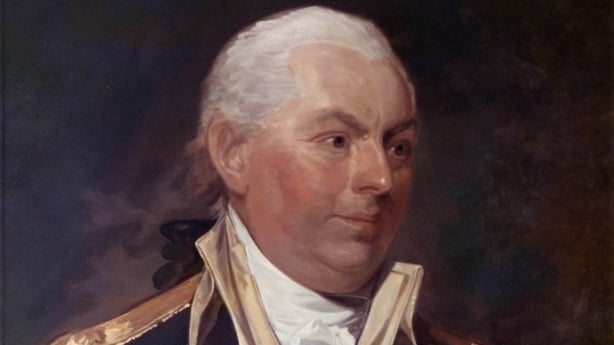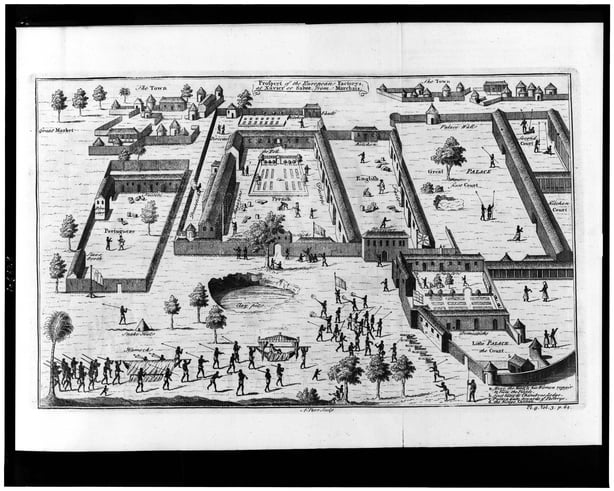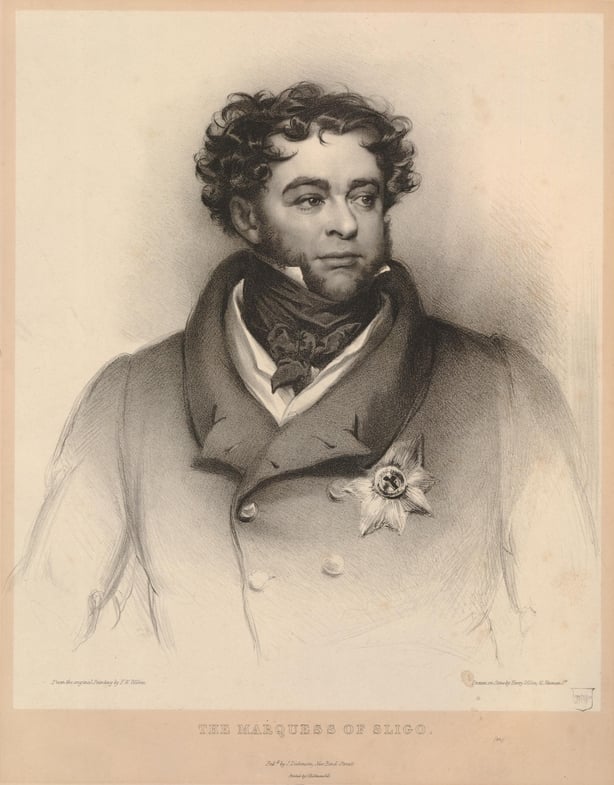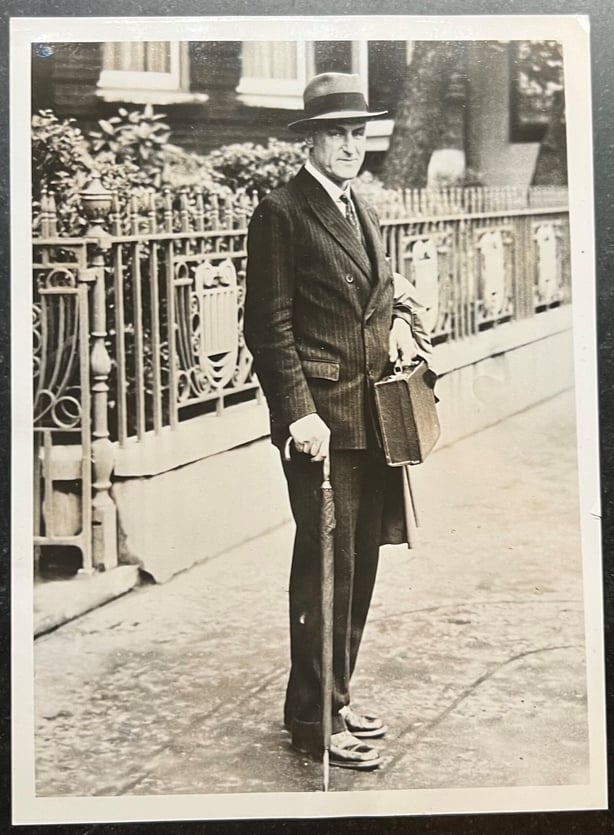Analysis: Irish people played a significant role in the British Empire, from the slave trade to intelligence gathering
By Kate O'Malley, RIA
1. An Irish sea captain captured the first British Royal Navy ship in the American War of Independence
When the 13 colonies of North America declared their independence from the British Crown, the Americans scrambled to challenge the most powerful navy in the world. Wexford born John Barry had served on ships since his childhood, starting as a cabin boy on a merchant vessel captained by his uncle Nicholas. But under the penal laws, a young Catholic like Barry had few prospects.
Aged 15 he moved to Philadelphia, where his naval skills soon made an impression in the bustling colonial port city. He was captaining a vessel by 21, and later set a record for the fastest day's sailing recorded during the 18th Century.
We need your consent to load this rte-player contentWe use rte-player to manage extra content that can set cookies on your device and collect data about your activity. Please review their details and accept them to load the content.Manage Preferences
From RTÉ Radio 1's Irish Imperial Lives, hear more about the adventures of Commodore John Barry here
When conflict broke out, Barry lacked the political connections to be appointed a captain in the new Continental Navy. He spent the first five months helping to fit out ships for battle. However, when his chance came, Barry seized it. His better-connected colleagues may have spent the war avoiding the enemy, but Barry was keen on navigating choppy waters.
When he spied the British ship, The Edward, Barry didn't rush into battle. Instead, he outwitted his enemies and filled them with false confidence, by feigning weakness and sailing in the opposite direction. As The Edward gave chase, Barry drilled his men in preparation for the battle to come, in an era when firing a cannon was an 11-step process. When The Edward pulled alongside him, anticipating a quick victory, Barry struck his colours and ordered his men to open fire. The startled crew of The Edward were caught off-guard and quickly surrendered.

Barry escorted his captured prize back to Philadelphia where he was hailed as a conquering hero. It was the first of several extraordinary adventures during America’s Revolutionary War which saw George Washington later appoint Barry, a Wexfordian, as the head of the American Navy.
2. Irish people - including an Ulster man linked to Kamala Harris - played a significant role in both administering and abolishing the transatlantic trade in enslaved people
The transatlantic slave trade was not simply used to provide labour for British plantations. Enslaved people were also traded with other, at the time more established, European powers - including Spain and Portugal - to secure preferable terms for the British in the Caribbean. In the 1700s, Kerryman David Tuohy, then based in Liverpool, made a considerable fortune as a captain of ships carrying enslaved peoples, and later as an investor in other such voyages.


However, other Irish people had a more positive role. The Dublin born sailor James Field Stanfield, was horrified by what he witnessed onboard a ship carrying enslaved people. His testimony, published in 1788 as 'Observations on a Guinea Voyage’, provided a vivid, eye-witness account of the horrors of slavery to a society largely ignorant of the conditions on board these ships.
When the practice of enslavement was finally abolished in Jamaica in the 1830s, the first Governor tasked with phasing it out was another plantation owner from Ireland, Howe Peter Browne. His was a mixed legacy, facing opposition from other plantation owners, including Antrim born plantation owner, Hamilton Brown (no relation). He argued that slaves in his plantation were better off than the poor in England (though contemporary accounts of their conditions suggest this claim was baseless). In a 2019 essay on his own Jamaican roots, Kamala Harris’ father, Donald Harris traced a family ancestry back to Hamilton Brown.
We need your consent to load this rte-player contentWe use rte-player to manage extra content that can set cookies on your device and collect data about your activity. Please review their details and accept them to load the content.Manage Preferences
From RTÉ Radio 1's Irish Imperial Lives, The Irish of The Caribbean: Slave Owners and Whistle Blowers
3. Britain shipped over 4,000 teenage girls from Irish workhouses to Australia after the famine
The Earl Grey Scheme, named after the Secretary of State for the Colonies Henry Grey, the 3rd Earl Grey, formed part of a wider plan to fund emigration from Ireland in the wake of the famine. Healthy girls, some, though not all of them, orphaned, were becoming a financial drain on Irish workhouses, and so were offered a passage to Australia. But there was another crude rationale for the scheme: there was a gender imbalance (7:1) in the Australian colonies, and it was hoped that these girls, after several harsh months’ passage, would soon become domestic servants and wives.
4000 girls from all over Ireland were transported to Australia between 1848 to 1850 as part of the scheme. On arrival they had a very hostile reception, especially by the Australian press which accused them of being of ‘low moral character’. Supports for these women on arrival were wholly inadequate and, left to fend for themselves, they were in great danger of being exploited.
We need your consent to load this rte-player contentWe use rte-player to manage extra content that can set cookies on your device and collect data about your activity. Please review their details and accept them to load the content.Manage Preferences
From RTÉ Radio 1's Irish Imperial Lives, descendent Joan Dwyer tells the story of the famine orphan girls sent to Australia
Hostility towards their arrival seems contradictory given that preserving the integrity of the white anglophone colony was the priority of the colonial administrators, from whom, incidentally, they had to seek permission before marrying. Despite great challenges these Irish women became agents of integration who married and settled down quickly in both the cities and the bush.
Advances in genealogical research mean these girls' ancestors in Australia can now discover their Irish roots and somewhat unexpected family histories. One of them was Eliza Fraser from Belfast, and, remarkably, Eliza’s own mother before her had been transported to Van Diemen’s Land for stealing. She died not knowing that her daughter had made the passage too, possibly in the hope of being reunited with her.
4. An Irish Intelligence officer in India kept a bomb as a paperweight and disguised himself as a Sikh taximan
After his first year of study in Trinity College Dublin, which mustn’t have set his world alight, Charles Tegart (born in Derry) applied to join the Indian Police Service. The following year in 1901 he ended up as far away from College Green as plausible; in the Calcutta Police. He became Deputy-Inspector General (Intelligence) in 1918, and Commissioner of Calcutta Police in 1923. The most difficult aspect of governing the British Raj at this time was suppressing the growing Indian nationalist movement, most active in Bengal.

Tegart gained a reputation as a master of disguise, despite his Irish pallor. In her unpublished biography, Tegart’s wife Kathleen gives us a sense of his work on the ground:
'His features were strongly marked, he was tall and muscular, his eyes were dark-blue and his tan had a warm, reddish tinge… At night, wearing a beard and puggaree, he could pass as a Sikh taxi-driver, but even in the daytime he could go unnoticed as a Kabuli or Pathan...[he met informers] at night in some lonely places previously agreed on, and rarely took notes but committed the whole of what he was told to memory.'
If only to add to his derring-do image, Tegart kept what he thought was a defused bomb as a paperweight on his desk (it exploded when, in a fit of rage, he threw it at a map on the wall) and travelled in an open top car with his loyal bull terrier perched on the bonnet. He evaded several assassination attempts.
We need your consent to load this rte-player contentWe use rte-player to manage extra content that can set cookies on your device and collect data about your activity. Please review their details and accept them to load the content.Manage Preferences
From RTÉ Radio 1's Irish Imperial Lives, meet police intelligence officer and master of disguise Charles Tegart
His retirement wasn’t particularly quiet, he continued to work for British Intelligence and travelled to Ireland several times during the second world war, most notably in 1940, which incensed the Irish government as his reports resulted in scares about the activities of German U boats off the coast of Ireland, raising fears of a possible German invasion.
In the 2011 Iraq war satire, In the Loop, David Rasche (better known now, as Karl in HBO's Succession) plays a hawkish American politician, who keeps a grenade on his desk as a paperweight. As we now know from the travails of Charles Tegart, real life can indeed be stranger than fiction.
Kate O'Malley is Assistant Editor of the RIA's Documents on Irish Foreign Policy (DIFP) series, and is the co-host, with Abie Philbin Bowman, of the RTÉ radio and podcast series 'Irish Imperial Lives'. You can listen to every episode of season one here - or wherever you podcast.
Follow RTÉ Brainstorm on WhatsApp and Instagram for more stories and updates
The views expressed here are those of the author and do not represent or reflect the views of RTÉ

